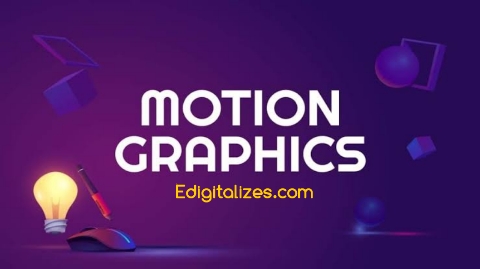
Advertisement
The most sought-after tools, animation graphics or motion graphics, are the means through which one shows injecting life into simple visuals by adding motion, depth, and dynamism. Mastering animation graphics is considered of very high value for creative industries when it comes to films, TV series, video games, advertisements, or social media content.
Graphics animation might be quite overwhelming at the beginning, but going about it systematically helps in building the skill gradually to create professional and interesting animations. Here’s a step-by-step guide on how to get started with learning animation graphics.
1. Learn Basics Of animation
Before jumping into the more advanced sets of software and techniques, the basics that are the core of animation must first be understood. The basis of classic concepts involves ideas of timing, spacing, squash and stretch, anticipation, and easing-all things that relate to smooth and believable motion. Studying classic techniques of animation-even if you’re focusing on digital graphics-will enable you to develop a more thorough understanding of how objects and characters move in a believable manner.
2. Choosing Software
First, you need to get the right tools to start with animation graphics. Depending on the type of animation and the budget available, there are a few software options: Some of the most popular programs by which one can learn animation are:
Advertisement
After Effects is probably one of the most common tools used to create motion graphics and visual effects. It’s great for animating text, shapes, logos, and even 3D objects. After Effects also works well with other applications provided by Adobe, such as Illustrator and Photoshop.
Blender: This is a powerful, free, open-source 3D animation software. It’s one great avenue for interest in motion graphics into 3D. It is very free and has a strong community that has made tutorials and resources available to beginners.
Cinema 4D: This is yet another tool that is taken as an industry standard when it comes to 3D motion graphics. User-friendly means more time for creativity, and it works seamlessly with After Effects.
Toon Boom: This is another great option for 2D animators. It’s used on anything from the simplest animations to full-blown TV shows and films.
After Effects would be great for a beginner because it’s really targeted toward motion graphics.
3. Know Software
Once you have chosen the software, it’s time to learn how to work in it. First of all, master the basic skills of creating and manipulating shapes, working with layers, animating text, and using keyframes. Keyframes are quite important for animation because they define the start and end points of any motion.
Many are found on YouTube, Udemy, or Skillshare and provide structured courses that you can go through at your own speed. Free tutorials provided by websites such as Video Copilot or School of Motion are great resources that cover foundational principles and advanced techniques.
4. Practice with Simple Projects
The first thing to do with animation is to begin with small projects. You can start by animating basic shapes or text for practising simple fade-ins, slide-ins, or bounces. Projects can get increasingly difficult. Now you can try animating a logo, doing some motion graphics for social media, even creating a short explainer video. The more you practice, the better you know the software and the principles of animation.
Also, by working on personal projects, you will have creative license to experiment and find your style.
5. Research Examples of Motion Design
Watching other animators’ work is one of the best means to learn and get inspired. Websites like Behance, Dribbble, and Vimeo are full of animation portfolios and motion graphics examples. Observe how each has been done: at what points the animation flows, how the motion flows, the time-lapse of frames, and how the graphics actually fit with the live-action shots, if involved.
Analyze how professional animators communicate ideas through color, typography, and design using motion. Also, studying well-conducted motion graphics will give you a better feel of visual storytelling.
Conclusion
Animation graphics are an exciting but usually quite complicated field of knowledge to master, as it involves practice, patience, and at least a bit of creativity. Learning the basic principles of animation, choosing the proper software to work in, practicing with realistic projects, and constantly improving your skill sets are the ways you’ll be able to create stunning motion graphics for captivating and engaging audiences. Whether you want to work in film, advertising, or digital media, mastery of animation graphics opens up creative possibilities.
Advertisement

Leave a Reply